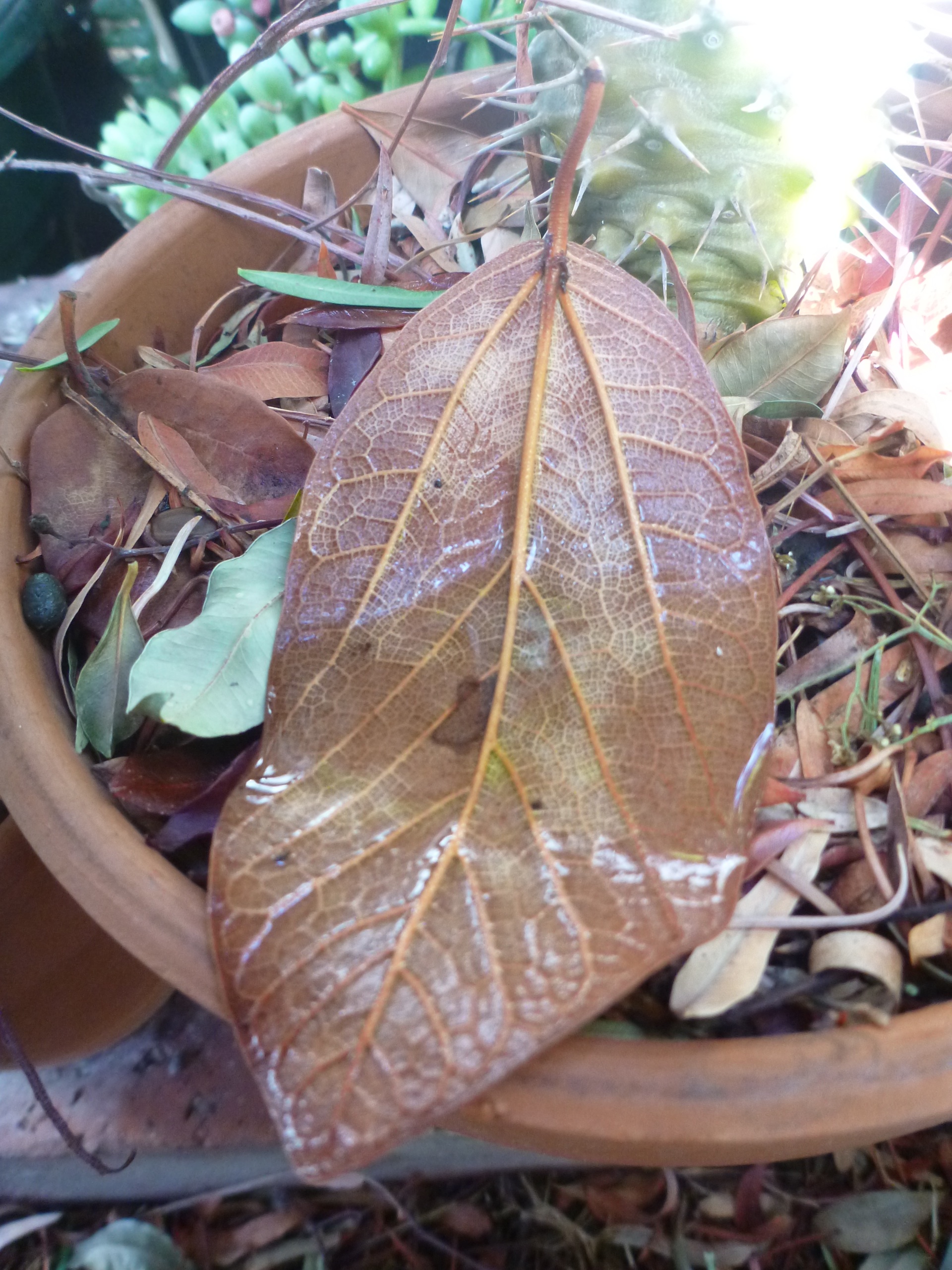Rain! Rain! Rain! But is it Enough to Water Plants?

During our ongoing drought in California, rainfall has become almost as exciting as a small earthquake. Failed rain forecasts seem ever more common, sometimes with less rain than predicted or no rain actually arriving. After so many disappointments, when I actually hear rain falling, I usually drop everything to rush outside in a state of semi-disbelief to witness the rain, just as I do when the first structural shaking from a little earthquake seems like it might be the start of a bigger earthquake.
For Californians who pay attention to the increased fire danger that results from statewide dry soils and low levels of moisture in plants and trees, and who are concerned about the numerous ecological and other impacts from drought, fall and winter rains are a hot topic. The first period of heavy rainfall is a cause for celebration; it provides decreased fire threat and many benefits to soils, trees, and plants, at least temporarily or until the next dry period.
Water-soluble soils salts accumulate from spring through fall in California’s Mediterranean-climate areas, or for a year or longer during droughts and in areas with low rainfall. Common sources of urban soil salts including fertilizers, minerals left behind from evaporated municipal irrigation water, and pet or wildlife urine. Salts tend to be concentrated in the first few inches to several inches of soil. Sufficient concentrations of salts cause stress to plants, are problematic for plant absorption of soil water, cause salt burn or brown dead leaf tips and margins, and if severe can kill plants and trees. Among many other reasons, sufficient annual rainfall is important for flushing salts deeper into soil where they won’t harm plants.
Small storms and brief or light fall-and-winter rainy periods might seem exciting, but they don’t provide much water to plants and soil. Irrigation calculations can be complex and technical depending on plant species, seasonal temperatures, and other factors. Most lawns and turfgrasses need about 1/3-inch or less water per week during cool-to-cold weather, and 1 to 2 inches of water per week during warm-to-hot weather.
Many of our brief fall-and-winter rainstorms in California Mediterranean-climate areas produce anywhere from about 1/20 of an inch of water to a third or half-an-inch of water. For comparison, sprinkler heads put out about 4/10-inch of water (for water-conserving sprinklers) to 1.5 inches or more per hour. This means that a light rainstorm over a few hours, or a heavy shorter rainy period that puts out 1/10 to 1/2 inch of water, is approximately the equivalent of running many lawn sprinklers for about 5 to 30 minutes, and it may provide sufficient water for lawns and small plants for a few days to a week or longer. This is a broad generalization. You can easily measure actual water output in your yard by setting out small uniform containers, measuring water output after running sprinklers for a specific number of minutes, and averaging results for an overall estimate.
An inch of rainfall that infiltrates completely into soil will normally travel to a depth of a few or more inches for clay and clay-loam soils to several inches or even a foot or more in sandy soils and coarse, rocky soils. In compacted clay soils, 1/10 inch of rainfall may sit at the soil surface and partially evaporate when the sun comes out, or infiltrate to a mere fraction of an inch. Clay soils often absorb only a portion or a fraction of an inch of rainfall per hour, while sandy soils may absorb 2 inches or more per hour.
What does this mean for water availability to plants and plant benefit from short California rainstorms? Depending on many factors from soil type to runoff, it means that rainstorms providing about 1/10 to 1/2 an inch of water provide short-term water for lawns, small plants, and bedding plants, with some benefit to shrubs and trees but not sufficient water to meet needs for trees and larger plants, to refresh water reserves in soil, to flush salts from upper soil, or even to meet water needs for lawns and small plants for more than a few days to a week.
During fall-and-winter periods in California with light and intermittent rainstorms, landscape plants may continue to need irrigation. Trees and large shrubs may still need deep watering every few weeks to few months. And unfortunately, fire danger, in both urban and wildland areas, may persist.
GardenZeus has customized growing information by plant and zip code. To get started, enter your zip code here.
Other articles of interest include:
California Gardening During Rainstorms: Flush Salts and Avoid Soil Compaction